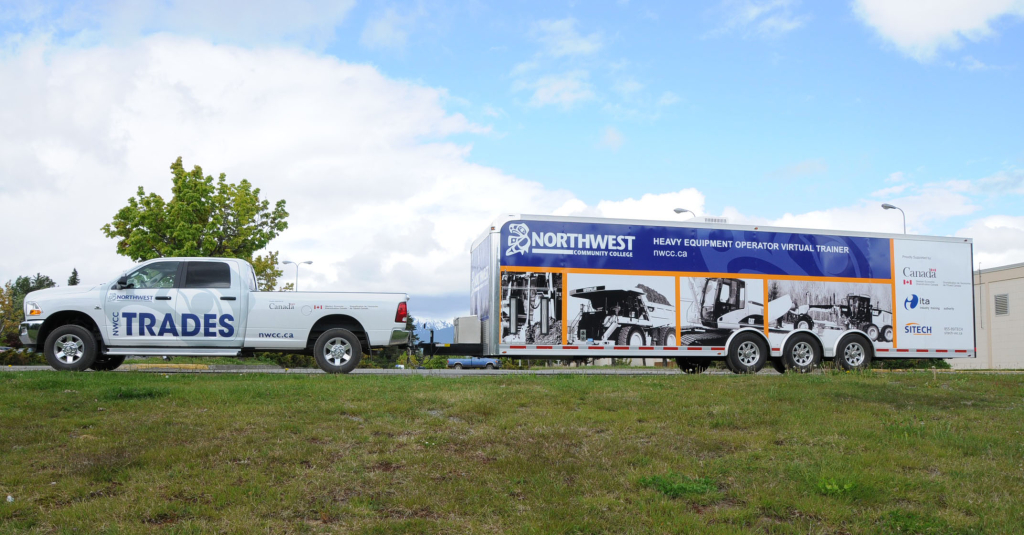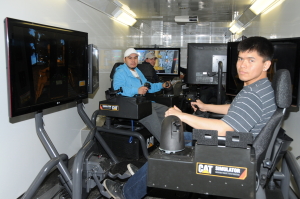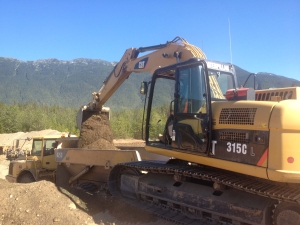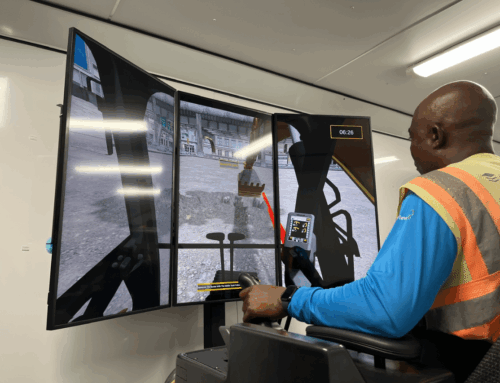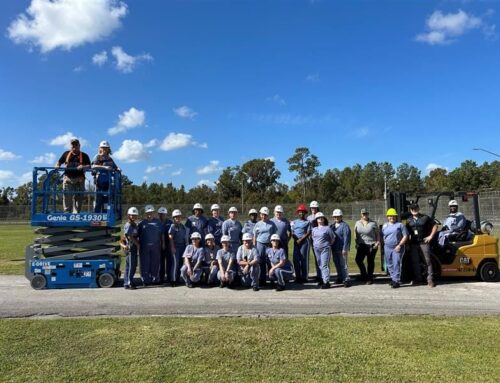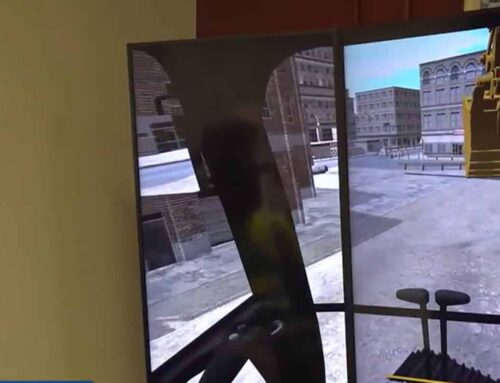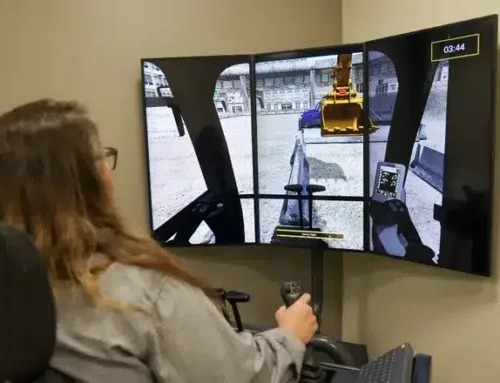Brian Badge, Chair of Trade, at Northwest Community College in British Columbia is shaping careers in the heavy equipment industry.
Northwest Community College (NWCC) was established in 1975, has expanded to nine regional campus locations and is a recognized leader in Aboriginal education. Among the many programs offered at NWCC is the Heavy Equipment program. The curriculum that teaches operator training consists of Heavy Equipment Operator Foundation and Heavy Equipment Operator Technician, which is the Apprenticeship part of the program. The college serves both the construction and mining industries. The program consists of theoretical classroom training, simulator training and seat time on actual machines. Badge says that with “massive amounts of industry coming to town,” there was a need for a heavy equipment training program. “We are experiencing an industrial boom in British Columbia’s Northwest and expect this to continue over the next 10 to 15 years. Heavy Equipment Operators will be one of the most needed trades,” states Badge.
In addition to several class modules, students receive a minimum of 30 hours of simulator training. In the apprenticeship program, students receive another 8 hours of simulator training. Badge thinks the program is successful because the methods enforce multiple types of learning. Instructors love the simulators because they take some of the worry out of training when students train on simulators between the classroom and actual machines vs. moving directly from the classroom to the machines.
The simulator training takes place in the classroom and in a travel trailer. The college designed a 32’ trailer and outfitted it to carry the simulators on the road for training or to events. The trailer is heated and air conditioned so the temperature is always controlled. Currently there are six simulators inside the trailer; plus six more simulators in the classroom. Depending on the trailer’s destination, we can swap out the simulators. For example, when traveling to a mine site, instructors take the mining simulators and leave the civil construction simulators in the classroom. The instructors love the ability to change around the configurations between the trailer and the classroom, depending on which sector they are training. Badge says, “Because we’re starting to see major mines being proposed in our area of the province we’ll be looking at additional mining equipment simulators. We can see value in adding additional mining simulators to our mobile unit so we can train in the most remote areas.”
Badge shares that the college decided to incorporate simulators into the program because of the added value factor. “Students that come out of the program are better trained,” says Badge. Simulator training adds value in many different ways. The most simplistic is that simulators add controls familiarization. When the students get into the seat of the actual machine, they are already competent on what the controls do. Badge confirms, “It totally speeds up the learning process to use the simulators because when
Machine training (seat time) is done on a 40-acre outdoor lab setting where actual projects are completed by class members. For example, over the last three years, a motocross track has been built and just recently completed by students in the program. Going forward , a cross country ski site is planned. Hands-on projects are a way to incorporate task training with real-time production. Badge says, “Students must also learn to work with other operators on the worksite.” The machinery is outfitted with radios and the operators communicate with each other while completing tasks. “’Stop, pull over, don’t move over…’ It is a very interactive setting,” says Badge.
“Students love the simulators. We have typically found that students will come in early to use the simulators.”
What stands out in the NWCC Heavy Equipment program is the use of technology. While schools must teach the same standards across the board, NWCC differentiates itself with simulator training. The Heavy Equipment program is so popular that it fills up quickly. Students that come through the program range in age from 18 to 55. Older students are not coming back to brush up on skills, but instead are developing skills to change careers. Badge shares, “The reality is that heavy equipment operation is a well-paying career.” It doesn’t take a lot of time from start to finish for us to produce a competent, safe operator. Though it takes many years to become a good operator, NWCC can ready an entry-level operator through its program. “Students can enter the workforce after completing the curriculum and expect to get started in an entry-level position,” Badge adds.
Badge says that some students enter the program with the intent of becoming heavy equipment operators but may discover some other career that they like and pursue. Badge sites a student that became certified in Traffic Control Flagging after being introduced to the job during the program. Others have discovered careers in Occupational First Aid through the foundation class taught during the program and end up becoming certified in the school’s First Aid, Health & Safety program. The heavy equipment program has opened doors to other occupations by exposing students to the careers.
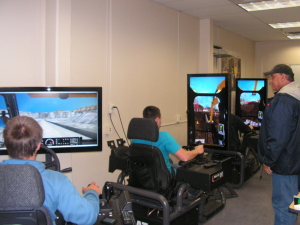
“We’ve had some really good success stories of people that have came to the program because they wanted to change careers. They went through the foundations program, apprenticed, and then found jobs where they are making great money and have a whole new life,” Badge comments.
The trailer is out on the road and a picture is worth a thousand words. It advertises the program by virtue of being out on the road.
“Another benefit to the simulators is that they are ‘green,’ meaning we are not burning any fossil fuels. We think it is important to be cognoscente of the environment and using the simulators are just one more way to address the issue.” -Brian Badge
RESOURCES
Northwest Community College; www.nwcc.bc.ca
Industry Training Authority; www.itabc.ca


